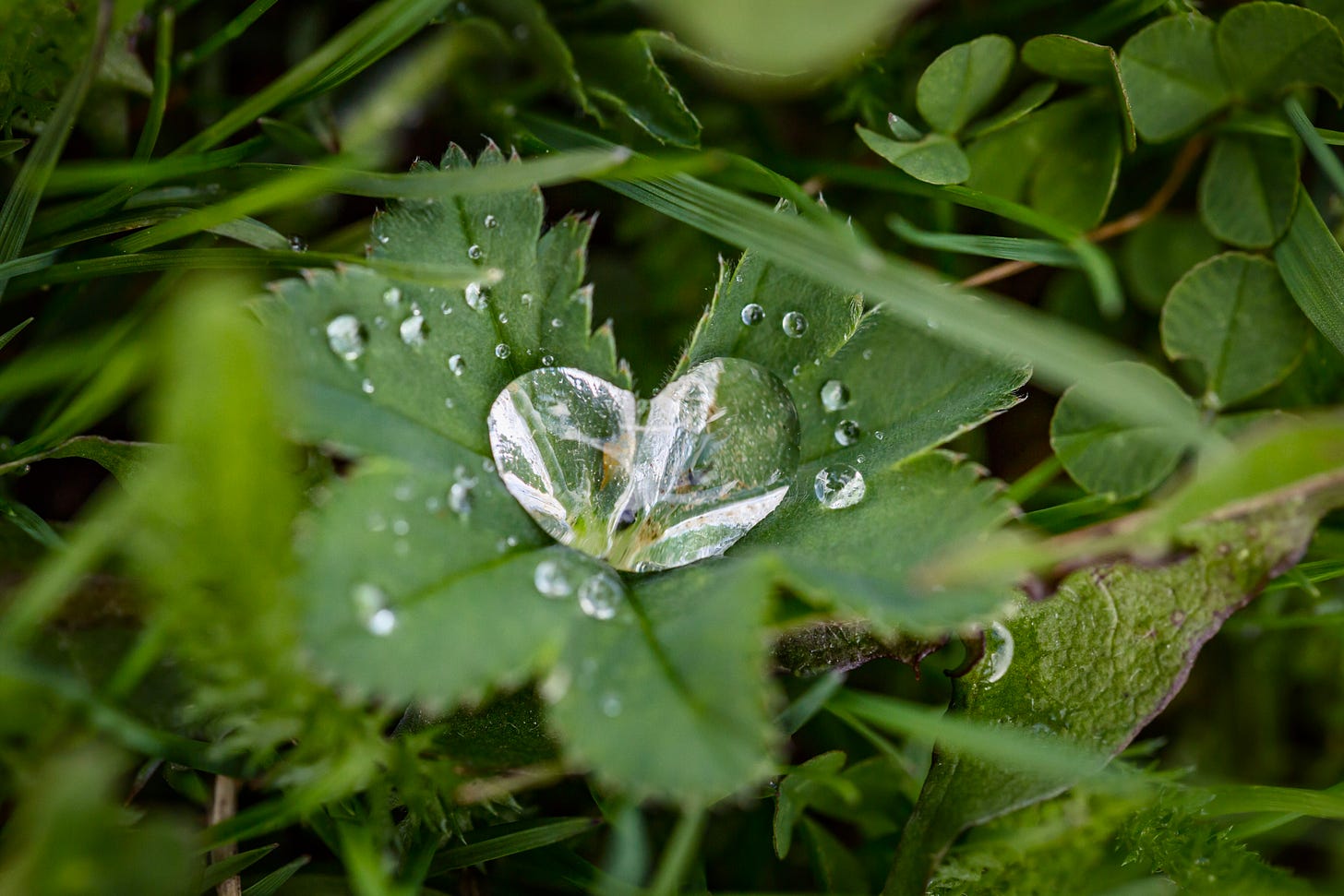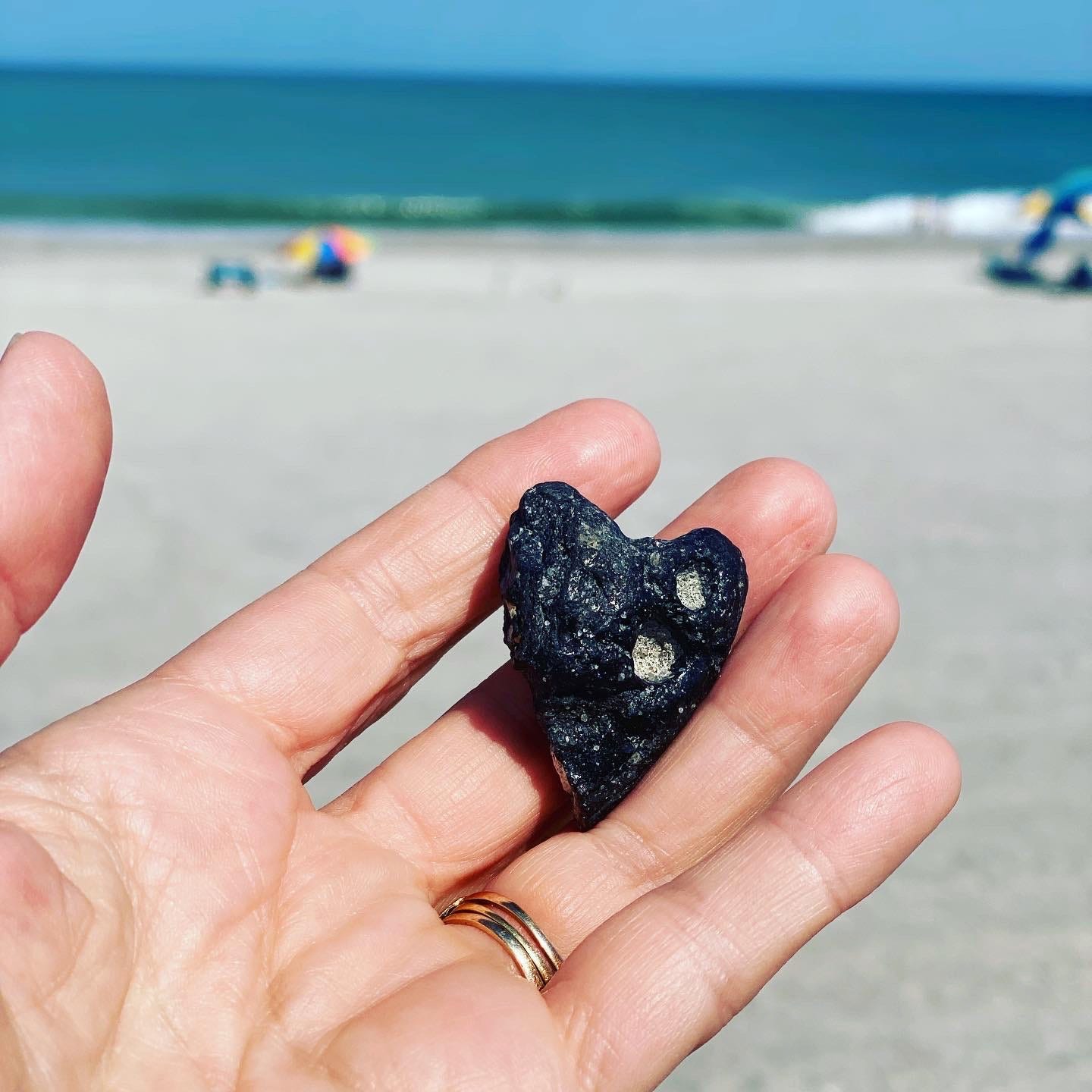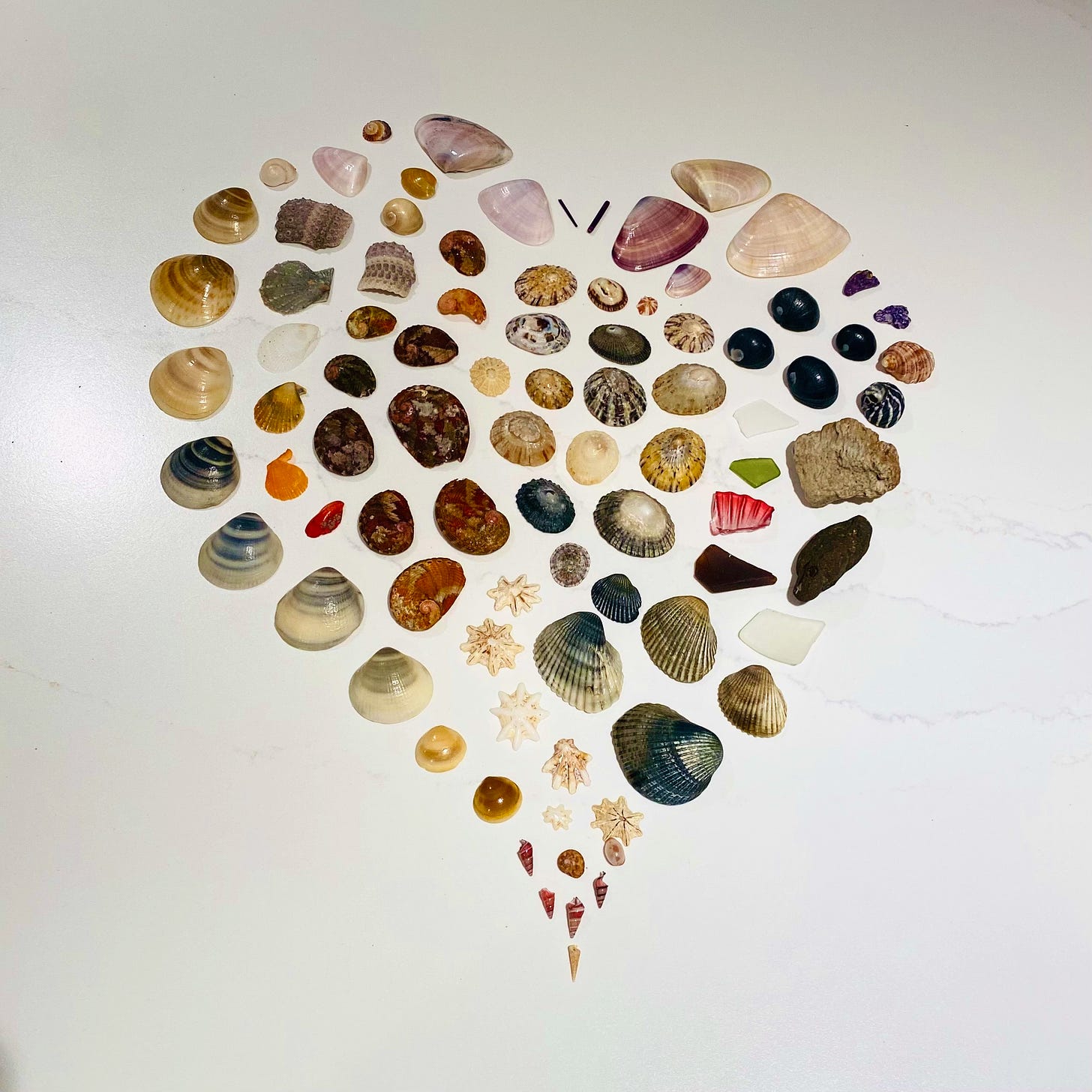They’re hard to miss, once you start looking for them. You’ll find them in leaves and flowers, among stones and clouds, as a single raindrop held in a cinquefoil cradle. Naturally occurring hearts are everywhere, and we humans have a particular attraction to them. Small wonder. The symbol has been around since time immemorial, emerging at around 10,000 BCE and becoming associated with emotional attachment as early as 1250 CE, depending on which source you reference. Suffice it to say, we fell in love with hearts a very long time ago.
That said, my awareness of nature’s prototypical hearts has only come to the fore in recent years. Much as I hate to admit it, I suspect that relates to the dawn of social media platforms like Instagram that deliver far flung examples into the palm of my hand. Search #heartsinnature online and look at the images that turn up. Endearing, to say the least. They also bring me reassurance, a needed reminder that love can be found everywhere, the fidelity version of a four-leaf clover.
My favorite heart-finds happen at the coast. As a child, I was lucky to enjoy countless seaside vacations with family and friends. While I liked swimming, what I relished most was searching for shells. I spent hours moving like a sea star, head down, eyes caressing the sand. I amassed quite an amateur collection, which I sorted into cotton-lined boxes and tucked into an antique nightstand in my bedroom.
Eventually, my parents commissioned a rustic, curio table to display my esteemed assortment. I now have that piece in my home and can say with certainty that there isn’t a single heart-shaped item in it. In my childhood, I was on the hunt for unusual or intact specimens whose names I could identify or learn. I wasn’t looking for love on the beach.
These days, shells like the ones I gathered as a youth come into my life less frequently. For one thing, I take fewer vacations to the ocean. When I do, I find the beaches require longer spans of attention before they give up any treasures. Perhaps I get outside after the earliest beachcombers have already scored the real finds. More people now walk the same stretches of sand which is bound to have an impact. Beach renourishment projects bring in dredge spoil filled with tiny augers and olives, or the occasional shark’s tooth, but it seems the more substantial shells are missing. Or maybe it is purely a byproduct of adulthood. I’m taller now, and my eyesight isn’t what it used to be, so there’s a chance I’m just not seeing what’s there. Still, I continue to explore, finding joy in rediscovering shells similar to those I’ve found a hundred times before. I am ever hopeful.
I also look for hearts, which surface more readily and boost my spirits. There’s one! A mussel with its two sides still conjoined. There’s another! A piece of well-worn quahog clam, the same species used by Native Americans for wampum. Sometimes, seeing the heart requires imagination; I have to hold the object at just the right angle. Other times, it comes at me like a motivational speaker, full of confidence and promise.
On a recent trip to the other side of the world, I had the notion that I might finally add new shells of interest to my childhood collection, but the discoveries there weren’t much different than what I’d found in recent U.S. searches. My family and I picked up augers, nerites, and baby abalone. Attractive, but nothing much larger than a quarter.
To my dismay and surprise, and despite as much deliberate hunting as I could manage, I never found a heart.
The night before we were to part company, my older daughter and I turned out our seashore assortment onto the white counter in our borrowed, Sydney apartment. After nearly two weeks together, and such precious experiences, we acknowledged how hard it was to bid farewell to each other, especially to the younger nugget who now calls Australia home. We mourned the distances between us and the time that will pass until we can be together again.
As we talked, each of us trying unsuccessfully to hold in our tears, our hands moved almost unconsciously to our shells, feeling the different textures, our stories mingling with theirs. Tenderly, we slid one group together, then another. Colors and shapes found companionship - star limpets and scallops next to cockles and clams. One curve emerged, then a second, with a delicate pair of urchin spines for definition.
I ought to have known not to look for it on the shoreline this time around. My heart was with my people.
~Elizabeth







I have a collection of small heart shaped rocks from various shores on my kitchen window which are the daily reminder of those I love near and far. I too, have a child who lives far,far away. I am so thankful for FaceTime and cell phones . My mother once told me she missed us the most in the days after a visit. I understand this now...
beautiful and prompted a healing cry into my coffee this morning. thank you for sharing your words.